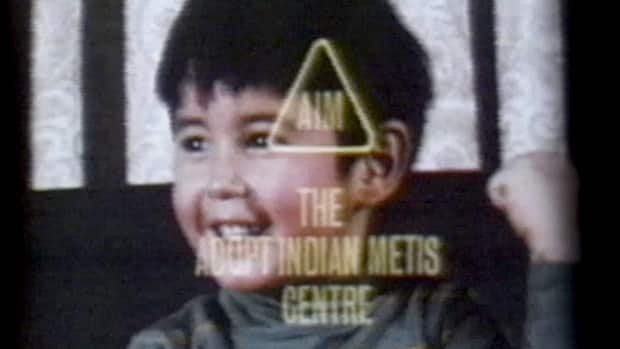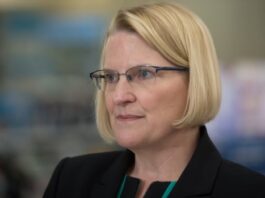
Unreserved49:14Community Heroes
By day, Dean Lerat is an RCMP staff sergeant in Fort Qu’Appelle, Sask. But in his free time, the member of Cowessess First Nation is a DNA detective.
Lerat, who is Saulteaux, is using DNA testing and archival records to help Indigenous people learn about their biological families and fill in gaps in their family histories. With that data, he’s creating genetic maps and extensive family trees of the Treaty 4 area in Saskatchewan.
“The Sixties Scoop adoptees [and] descendants of residential school survivors, I think I’ve helped over 15 of them now find their way back,” he told Unreserved host Rosanna Deerchild.
Lerat said people he doesn’t know contact him through social media channels, asking him to help them find where they come from.
“I’ll spend a couple hours in the morning, Saturday morning, having a cup of coffee … trying to figure out who their aunts and uncles are. And then I’ll send them back a tree if I can. Whether it’s partial, whether it’s full,” he said.
“I’m curious. I like to solve mysteries.”
A family affair
Lerat’s DNA sleuthing started about six years ago with a bet.
He was stationed in Nova Scotia at the time. Over a pint in an Antigonish pub on St. Patrick’s Day, he and his wife — who both had some distant Irish ancestry — bet on who was the most Irish.
They used DNA testing kits to find out. With those tests, Lerat discovered an entire family he didn’t know.
“My mother, she never knew who her father was,” he said.
WATCH | The Sixties Scoop in Canada explained:
Canada took thousands of Indigenous children from their parents between the 1960s and the 1980s, and the effects are still being felt today.
At 17, Lerat’s grandmother ran away from the Marieval Residential School on Cowessess and fled to Regina. It was post-war Canada and love was in the air, Lerat added.
“She got pregnant as a young teenager,” he said. “She suffered [for] many years and never told anyone who my mother’s father was.”
“My grandmother is still alive. She’s 92 years old and I love her to death and she’s a true survivor.”
After discovering new family members on his biological grandfather’s side, Lerat’s cousins and aunties from Cowessess wanted to do the DNA testing as well.
He created family trees for each of them, but more cousins wanted DNA tests of their own. The branches of the trees kept growing.
“Cowessess First Nation is surrounded by three other nations — Ochapowace, Kahkewistahaw and Sakimay. They all share ancestors,” Lerat explained.
“And then from those, they branched off into other Treaty 4 nations. So I’ve created a tree with all of these [testing] kits … I think we have over 11,000 [names] in there now.”
Creating a ‘genetic road map’
Along with DNA testing, Lerat also uses obituaries, band lists, censuses and old documents from the Northwest Mounted Police (the precursor to the RCMP) to inform his work. He also uses online databases offered by companies such as Ancestry, 23 and Me, My Heritage and Family Tree DNA.
All of this work helps Lerat piece together what he calls a “genetic road map.”
Lerat said he has enough information now that he knows pretty much everyone on Cowessess and the neighbouring nations. But there’s always the chance he’ll find new members of his community.
“One of the gentlemen I’m working with right now, his mother was [a residential school survivor] and then he was taken away when he was a small child,” Lerat said. “Him and his three sisters and they were fostered out.… He grew up rough, he grew up tough.”
This man found his mother later on in life. Then, with Lerat’s help, his sisters did DNA testing.
“I helped them find their home. And we’re having kind of a reunion at Cowessess’ powwow in August,” he said. “I have [about] 12 people coming back to meet their families, meet their descendants and learn about their culture, their identity.”

Lerat is “a blessing and a breath of fresh air to many families,” said outgoing Cowessess First Nation Chief Cadmus Delorme.
“When we talk about our history in our reserve, our First Nation, we tend to not even know our own history. And so when you do the family trees or the genealogies, especially with the contemporary options of Ancestry and the saliva [tests], it really confirms the beautiful family trees many have,” she said.
“That’s how we get stronger today as Indigenous people.”
Bringing back family kinship
Chasity Delorme, who is distantly related to Cadmus Delorme, did the test to learn how much of her own ancestry is Indigenous and how much of it is French.
“I’m super proud of Dean [for] doing what he does.… He’s been connecting daughters with mothers and fathers with sons and sisters with brothers that they never knew existed, or they knew but they didn’t know,” she said.

Her grandparents, on both her mother and father’s sides, were forced to attend the Marieval Residential School. The experience instilled fear in her grandparents, who chose not to pass on any of their Cree culture.
“Raising all 11 of my aunts and uncles, including my dad, [my grandmother] never spoke a word of Cree to them,” Delorme said. “My dad tells us about how he could hear her and my mushum [grandfather] talking in the bedroom together in Cree, but would never speak it to the children, because they were afraid that the abuse that they endured would carry on to them.”
Delorme is a member of Cowessess First Nation and is currently running for the community’s non-resident band council position. She said there are more than 3,000 band members not living on Cowessess First Nation.
Many of them were separated from their families and cultures because of residential schools, the Sixties Scoop and being adopted out into different parts of Canada. And there’s a disconnect from who they are as Indigenous people, Delorme said.
“Now we’re bringing back that family kinship that was taken away from us because of what [Dean] is doing, out of the goodness of his heart.”
On a mission to help
Lerat comes from a long line of RCMP officers, and understands the institution’s difficult history: helping Indian agents remove Indigenous children from their homes and put them into residential schools.
But he became an RCMP officer to help people, and he sees his DNA detective work as another way to be of service to others.
“We know the past … and we try and work through it,” he said. “I love working with my new recruits that come in. Taking them to meet the chiefs and councils and sit down and learn about the history of the Sioux and our Standing Buffalo Nation, the history of the Saulteaux. … [They] are eager to learn.”
Lerat said it feels good to see Indigenous people finally meet with long-lost community members.
“You look at the way they laugh and smile and talk and they immediately identify with who their families are, because they [have] the same traits and same looks,” he said.
“It’s a great feeling knowing that they found their way home.”












